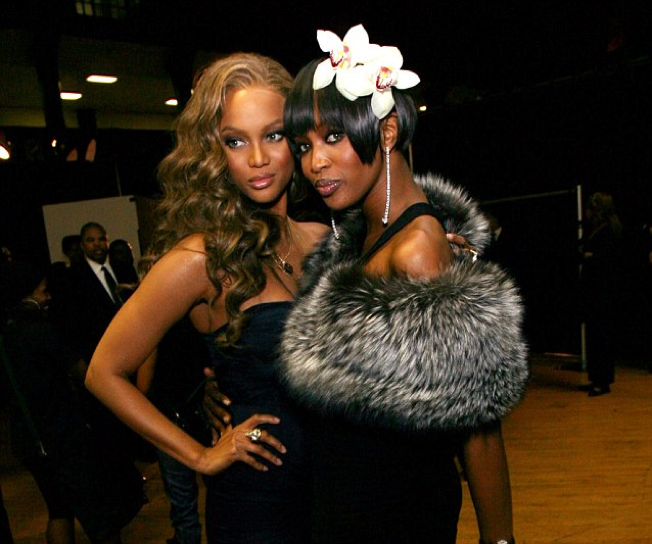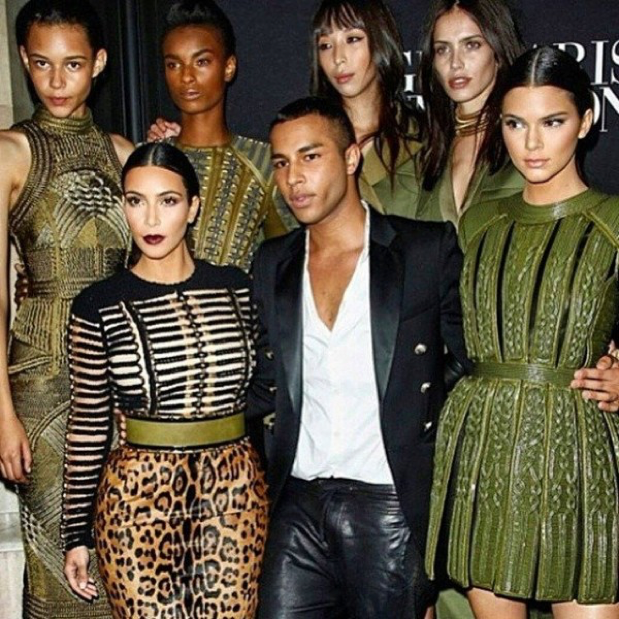New Faces, New Fashion: Balmain's Big Changes
 At Balmain, visionary creative director Olivier Rousteing is breaking the long-held stigma against diversity in fashion by advocating for inclusion in the industry—one runway at a time. In a recent interview for Alina Cho’s interview series, “The Atelier with Alina Cho,” Rousteing spoke candidly about his life, the fashion world and Balmain’s future. Rousteing was placed in a French orphanage as an infant and was later adopted by Caucasian parents who raised him in Bordeaux, France. Divulging into his personal struggles with race and identity, he remembers realizing that he did not look like his parents when he first entered school.
At Balmain, visionary creative director Olivier Rousteing is breaking the long-held stigma against diversity in fashion by advocating for inclusion in the industry—one runway at a time. In a recent interview for Alina Cho’s interview series, “The Atelier with Alina Cho,” Rousteing spoke candidly about his life, the fashion world and Balmain’s future. Rousteing was placed in a French orphanage as an infant and was later adopted by Caucasian parents who raised him in Bordeaux, France. Divulging into his personal struggles with race and identity, he remembers realizing that he did not look like his parents when he first entered school.
He recalls, “I didn’t realize my parents were white and I was black. But once I was in school, people sometimes believed less of me because I was black… I didn’t want to be in that world, and thank goodness my parents told me there were no colors. That’s something I will always fight for.” Rousteing is still fighting for that world, and his vision has translated through his collections season after season, as he continually produces some of the most diverse shows every Fashion Week.
It’s a refreshing change to have a visionary like Rousteing in an industry that, for decades, sought to dictate and limit the number of minorities. Tyra Banks often spoke of the negative effects her rivalry with Naomi Campbell had on her life, and in a recent interview with Norwegian-Swedish talk show Skavlan, she referenced the role that lack of racial acceptance played in the former feud. She said, “I don’t condone [Naomi’s] actions and her response, but I understand where it comes from. Because the world is saying, ‘You’re not going to have your spot, we’re going to take your money, we’re going to take your fame – go sit down, there’s somebody else.’”
 The rivalry began in the 1990s when Naomi Campbell, arguably the most famous black supermodel at the time, and Tyra Banks, fashion’s fresh-faced, rising star, were pitted against one another to be the industry’s dominant black supermodel. For years, Naomi and Tyra were the subjects of constant comparisons and competed for numerous jobs that strictly demanded only one black woman. This was the narrative of the fashion industry more than twenty years ago. Thankfully, proper measures and new attitudes are making sure the industry today doesn’t look as black and white as it once did.
The rivalry began in the 1990s when Naomi Campbell, arguably the most famous black supermodel at the time, and Tyra Banks, fashion’s fresh-faced, rising star, were pitted against one another to be the industry’s dominant black supermodel. For years, Naomi and Tyra were the subjects of constant comparisons and competed for numerous jobs that strictly demanded only one black woman. This was the narrative of the fashion industry more than twenty years ago. Thankfully, proper measures and new attitudes are making sure the industry today doesn’t look as black and white as it once did.
In recognition of the lack of recognition black fashion designers receive, the Fashion  Institute of Technology’s Museum is presenting an exhibition that will exclusively feature over 60 black fashion designers. The exhibit will showcase a particular concentration on the designs of the 1960s and 70’s, however, other contemporary designers such as Tracy Reese, Pyer Moss, and Hood by Air will also be featured. Not only will the museum be focusing on designers, but it will also celebrate how black models have influenced fashion and feature a short film starring famed former Vogue editor, Andre Leon Talley.
Institute of Technology’s Museum is presenting an exhibition that will exclusively feature over 60 black fashion designers. The exhibit will showcase a particular concentration on the designs of the 1960s and 70’s, however, other contemporary designers such as Tracy Reese, Pyer Moss, and Hood by Air will also be featured. Not only will the museum be focusing on designers, but it will also celebrate how black models have influenced fashion and feature a short film starring famed former Vogue editor, Andre Leon Talley.
When it comes to fashion’s take on diversity, Rousteing says it best. “I think fashion talks a lot, but they don’t act a lot. When you’re a designer, you have to express your world, and my world is about diversity. So when people describe shows as ‘modern’ or ‘chic’ but there are no [racially diverse women] in their show, I’m like, ‘No. That’s not modern, I’m sorry.’” We hear you Olivier.
